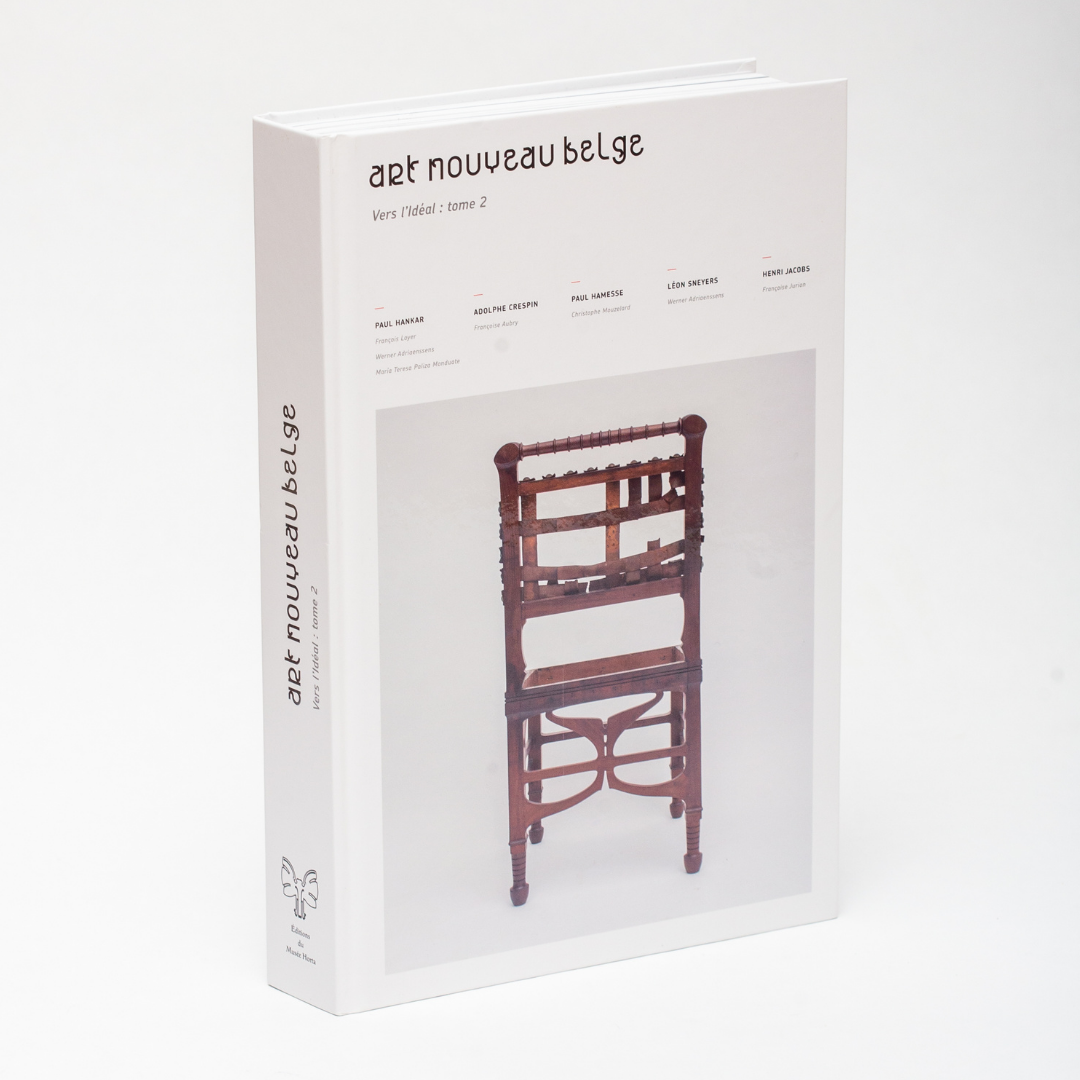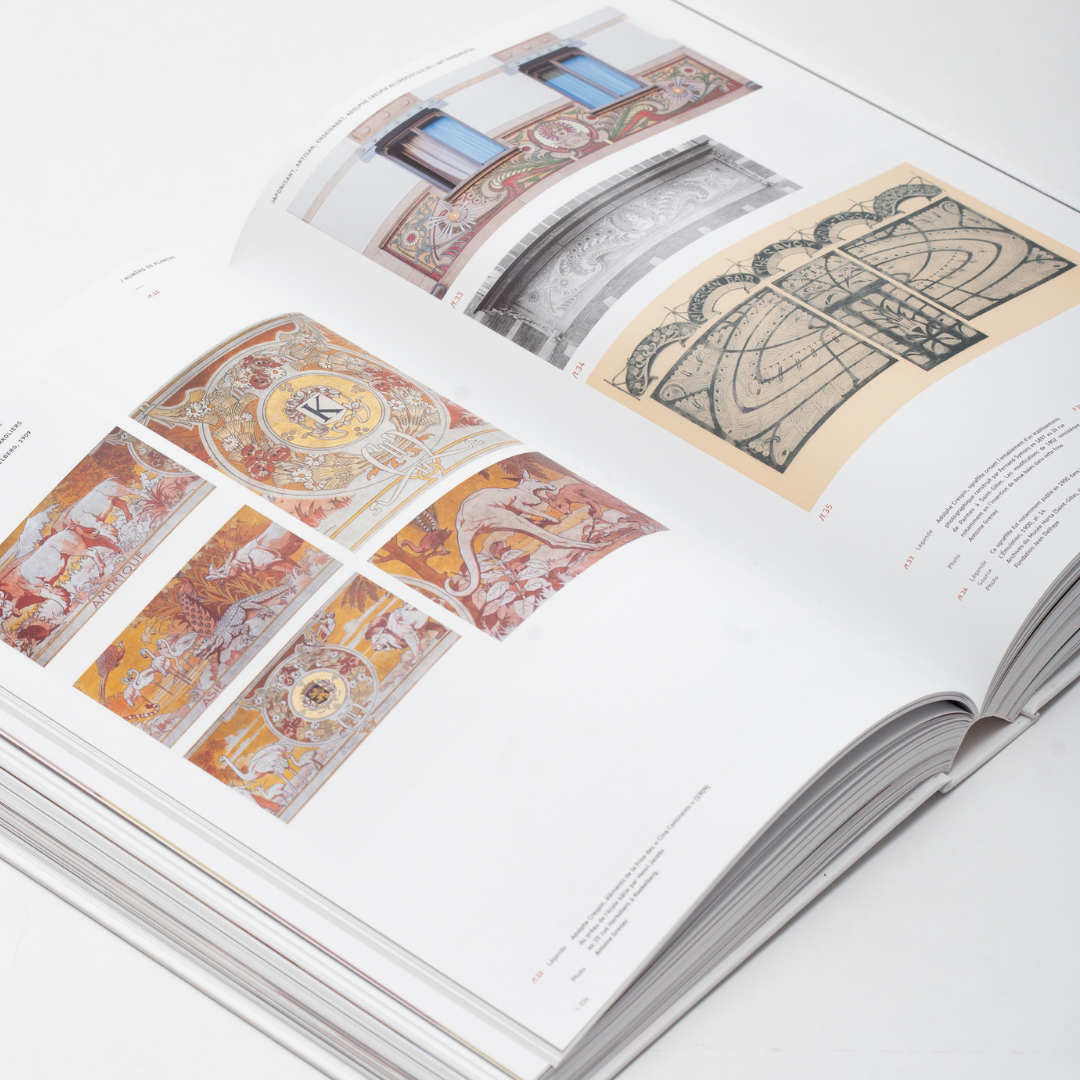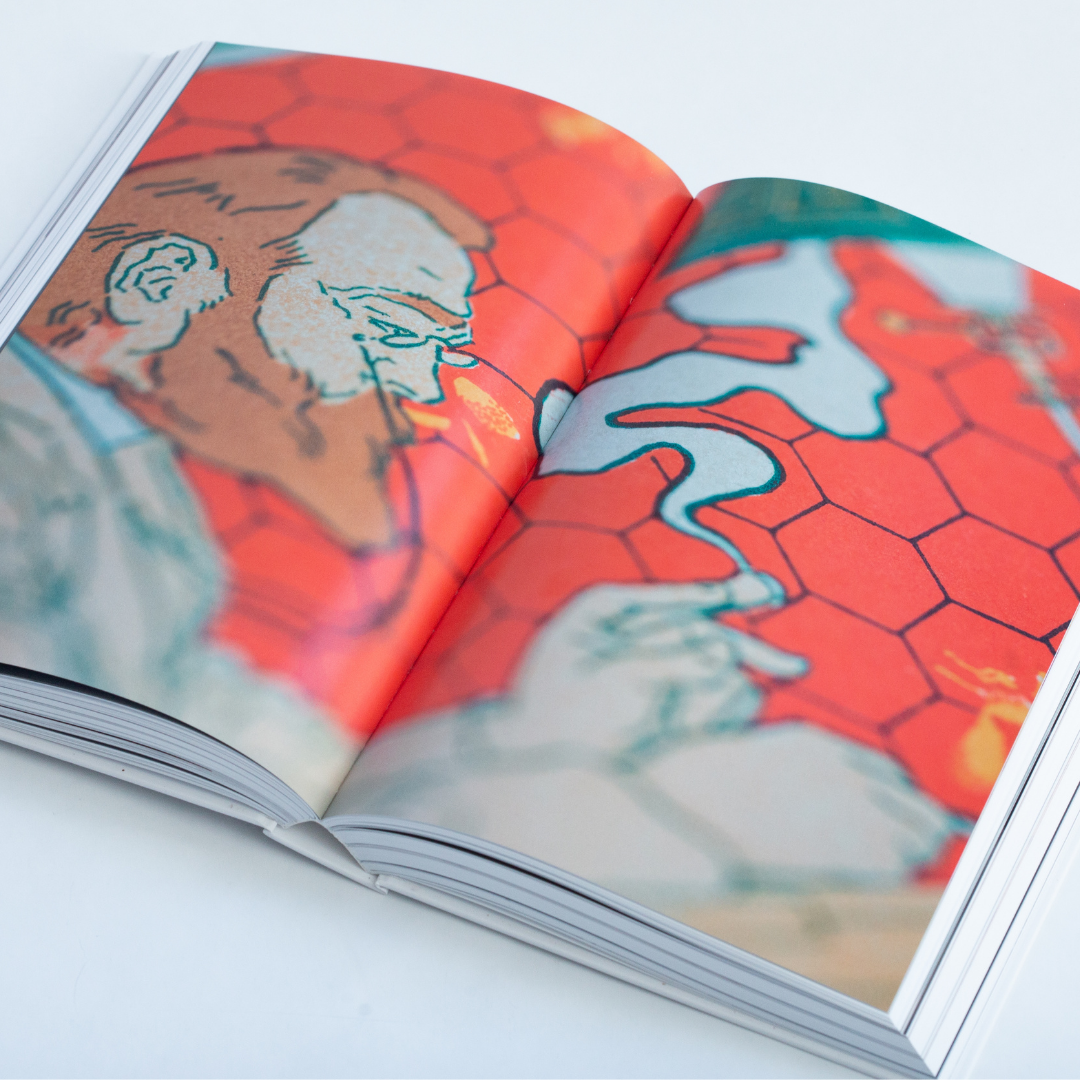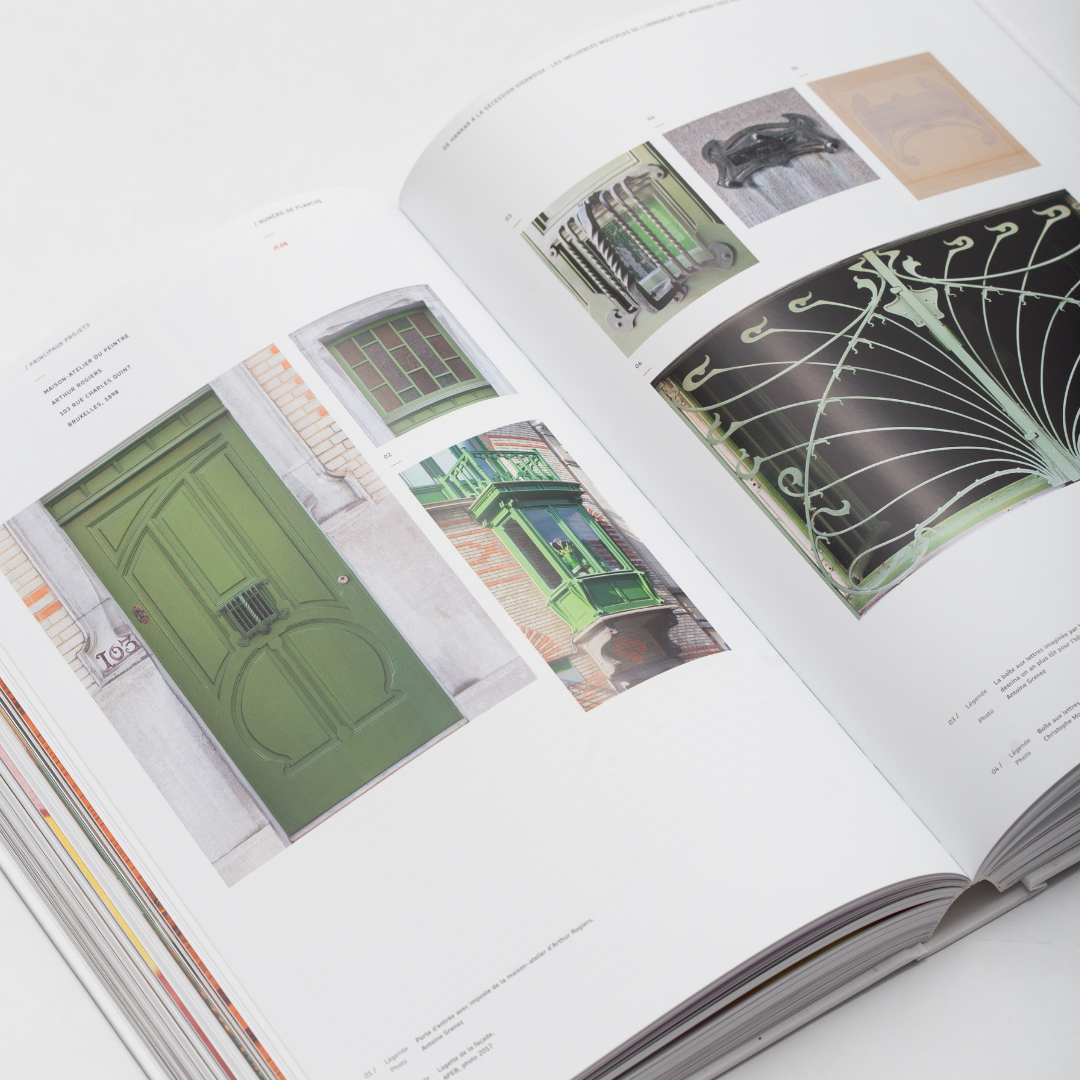Belgian Art Nouveau: Vision, Design & Craft : second volume
Coordinated by Borys Delobbe (CERTA-UCLouvain), Jonathan Mangelinckx and Werner Adriaenssens (MRAH / VUB), in collaboration with a team of researchers from different backgrounds, the second volume of the series " Belgian Art Nouveau: Vision, Design & Craft " proposes to rediscover the work of five key figures of Art Nouveau in Belgium: Paul Hankar, Adolphe Crespin, Paul Hamesse, Léon Sneyers and Henri Jacobs.
A new look at the work of five major figures of Art Nouveau in Belgium, both in architecture and in the applied arts (furniture, ironwork, sgraffiti...)
Authors : François Loyer, Werner Adriaenssens, Maria Teresa Paliza Monduate, Françoise Aubry, Christophe Mouzelard, Françoise Jurion
A preface by Linda Van Santvoort Professor Emeritus of Ghent University, 588 pages and 1,052 illustrations, including hundreds of original photographs by Antoine Grenez.
The first major study on the Art Nouveau career of Léon Sneyers by Werner Adriaenssens (MRAH-VUB).
A talented architect and ornamentalist, a charismatic pioneer at the same time as Victor Horta, and yet still largely unknown today, Paul Hankar reveals here several of his faces. In the creation of ironwork and furniture - two of his favourite areas - he sought to combine perfection of execution and purification of form. Paul Hankar was also responsible for large-scale projects, such as the construction of Victor Chávarri's palace in Bilbao, a true historicist masterpiece that preceded Art Nouveau, or the design of the colonial exhibition in Tervuren in 1897, which was visited by more than one million people.
A talented architect and ornamentalist, a charismatic pioneer at the same time as Victor Horta, and yet still largely unknown today, Paul Hankar reveals here several of his faces. In the creation of ironwork and furniture - two of his favourite areas - he sought to combine perfection of execution and purification of form. Paul Hankar was also responsible for large-scale projects, such as the construction of Victor Chávarri's palace in Bilbao, a true historicist masterpiece that preceded Art Nouveau, or the design of the colonial exhibition in Tervuren in 1897, which was visited by more than one million people. In many ways, Paul Hankar was the one who took Art Nouveau out of the homes of the upper middle class and gave it a version that was a true "fashion phenomenon", accessible to the general public and constantly in motion. But none of this was done alone: the painter-decorator and theoretician Adolphe Crespin played a decisive role in the development of Paul Hankar's career; while two of his student-collaborators, Paul Hamesse and Léon Sneyers, continued their master's ambitions after his tragic death in 1901. They themselves added new tones to the varied registers of Belgian Art Nouveau, moving towards greater sobriety without abandoning ornament, far from it.The many schools designed by Henri Jacobs in Brussels are part of the same phenomenon: regardless of their social class, children are now also entitled to their own decorative language, guided by benevolence and intended to bring joy.
With Paul Hankar, Léon Sneyers, Adolphe Crespin, Henri Jacobs and Paul Hamesse, Art Nouveau became accessible to new audiences in Belgium: from shops to schools, pharmacies, cinemas and social housing, their field of action is incredibly wide and still holds many surprises.



